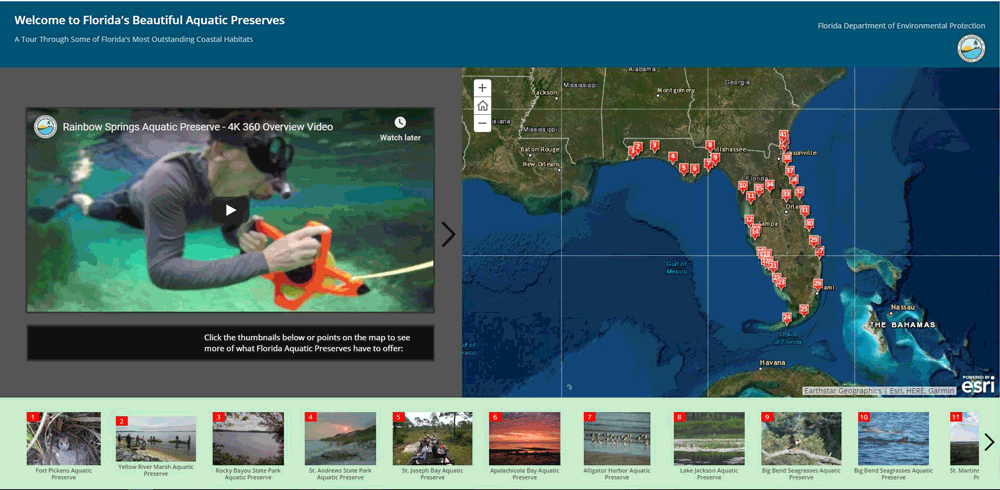SAVE THE DATE! The 50th anniversary of Florida’s Aquatic Preserve Act will make for an exciting year in 2025. Celebratory events will be popping up all around the state and we want you to join! Check this webpage frequently to stay up to date on the 50th anniversary event information.
Tour Our Aquatic Preserves
Our interactive story map takes you to our 43 aquatic treasures across the state, describing highlights of each aquatic preserve and providing links to each of their webpages on the DEP website.
If you're more into the technical side, visit our MapDirect of our aquatic preserves. Scale back and you can see where each AP in the state is located.
About our Aquatic Preserves
Much of Florida's distinctive character lies in the beauty of its coastline. The best of our coastal landscapes as well as several inland waters have been set aside for protection as aquatic preserves. Florida's natural beauty always has been a major attraction for both tourists and residents. Ironically, the very features that draw people to Florida are potentially endangered by the increased population pressures. Aquatic preserves protect Florida's living waters to ensure they will always be home for bird rookeries and fish nurseries, freshwater springs and salt marshes, and seagrass meadows and mangrove forests.
These aquatic preserves — dotted up and down Florida's coastline — offer a window into the state's natural and cultural heritage. In 1975, with growing appreciation for their environmental diversity and alluring beauty, Florida enacted the Aquatic Preserve Act. This ensures the continuation of aquatic preserves' natural conditions so "their aesthetic, biological and scientific values may endure for the enjoyment of future generations."
Wildlife Habitat
These pristine waters act as critical nurseries for fish and other aquatic life that are an integral part of the Florida way of life. Bottlenose dolphins break the water's surface and manatees feed on seagrasses. Wading and shore birds — including pelicans, ospreys and roseate spoonbills — thrive in the shallow waters.
Recreation
About two-thirds of Floridians live in counties that border an aquatic preserve. Aquatic preserves are vital to Florida's quality of life. Residents and visitors enjoy swimming, fishing, boating and paddling through the preserves, often unaware the waters are being protected and preserved.
Cultural Heritage
Numerous archaeological sites found along and within the aquatic preserves attest to early human habitation. Like many people today, early explorers found them attractive places to live. Shell mounds, which are heaps of the discarded remains from early meals, bear the evidence of early human communities and add to the cultural and historical value of the sites.
The natural heritage of aquatic preserves is entrusted to us — to explore, experience and protect — for future generations.




